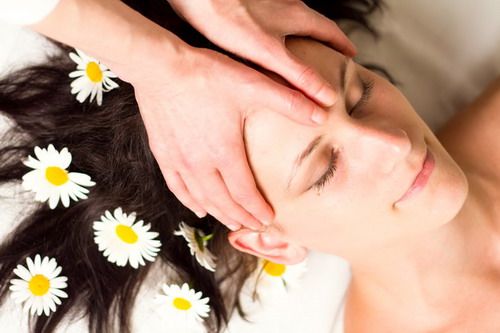Körpersprache
“Body Language”

The shape and hold of our body reflects our state of mind. It tells us about our past, because our features and contours are shaped by our individual life experiences. The basic shape of the body, as well as its individual parts reveals many of our psychical state of mind. Mature man with the body of a boy may subconsciously wish to stay a child. A man with a pale and skinny body can suffer emotional hunger. Reading the body means to understand the “body language” to perceive signals that reveal the inner feelings of a human being, his way of thinking and acting.
No one is the full master *of our body and therefore it is a kind of authenticity detector. The discrepancy between the mind and body creates physical tension that is reflected in blood pressure, pulse rate and the electrical conductivity of the skin, affects the resonance and tone of voice.
We are born to this world with pre-established physical and mental disposition shaped by genes given to us by our ancestors, but how we evolve further, as individuals, is influenced by a number of other factors: our upbringing, physical and mental ** food, our way of life and the influence of the location *** where we live. Our emotional attitudes, influence of our work and physical activity are all reflected in our development.
Small children need a loving touch for their healthy development, and if this need is not satisfied by the family, the child gets into internal conflict. It wants to reach out, but it is prevented to do so by the fear of rejection. The body subconsciously tightens muscles, but does not move.
Over time, it takes the form of chronic muscle contraction and changes into stiffness. It is reflected in the shoulders hunched and arms hanging limply at body sides. Such people are unable to relate to the touch they desire, afraid to aspire for what they want to achieve in life, fearing that they might fail.
In Oriental medicine the body reading is important part of traditional diagnostics. Each organ is associated with specific emotional and mental characteristics and the doctor looks for guidelines that would help him determine the cause of the patient’s symptoms. In the West, the interest in studying the therapeutic use of knowledge and the relationship between personality and its physical manifestations is of a much later date.
Today, many scientific disciplines recognize the importance of the linkage of mind and emotions clasp to the body structure . The objective of re-discovered, traditional techniques of treatment is to release the human personality by focusing on our body.
The value of reading the body for an experienced the therapist lies in the fact that the therapist can read it like a kind of map, and subsequently tries to understand problems of each individual. For example some body parts that may appear considerably tightened, or conversely, weak or underdeveloped. We can mention some examples:
ASYMETRY – The front side of the body indicates how we want things to be presented. Through the front side we consciously expose ourselves to the world. The back side shows less our less conscious side. The back side of the body often generates more stress and tensions.
GROUNDING – Ungrounded people often have a tendency to an uncertain walk. They do not move rapidly and often stumble. Their muscles are either stiff or limp, both being a disadvantage.
CHEST – Our chest is able to accommodate a wide range of feelings. If the diaphragm is constantly in tension, it restricts your breathing. The other extreme is too much widened, or vice versa – depressed chest.
Above mentioned symptoms cause the loss of physical and emotional vitality.
What are the physical indicators of mental health?
1. BREATHING AND THE MOVEMENT OF INTESTINES – The breath is regular and rhythmic, the chest moves freely and we can also freely receive and give tenderness and fervor. Bowel movement in the abdominal area is neither spasmodicn or flabby, but comes from a feeling of inner bliss.
2. MUSCLE TONE – Muscles can move easily between the state of tension and release without chronic tension or weakness.
3. BLOOD PRESSURE – It is not hypotensive (low) or hypertensive (high), the venous pump works well and regularly.
4. PULSING – The body shows signs of satisfaction. The person can freely experience sexual satisfaction and is able to experience feelings associated with love.
5. THE ABILITY TO ESTABLISH CONTACTS – We are open for establishing contact with another person without idealization, projection. We are able to distinguish between the authentic and pseudo-contact relationship. We are able to appreciate relationships.
6. THE ABILITY of EXPRESSION – We can express ourselves without fear and we have the skills to distinguish when to keep restrain, or to express our feelings.
7. THE ABILITY of FREEING OURSELVES – The ability to free ourselves from expressions of fear at times when there is really no danger, as well as from feelings of guilt and falling into despair.
8. COURAGE – The courage to support of what we think is right even if we have to expose ourselves to the criticism of people around us.
9. CONNECTION – The connection with our personal source of values.
10 RESPECT – Interest in others and respect for ourselves.
Therapeutic work is thus an attempt to restore balance and harmony of the structure.
full master * – mean we can´t control the body fully. It always shows us the divergence from the authenticity.
** Mental food – what we choose to see or listen, pictures, movies, music, information
*** In geographical sense
